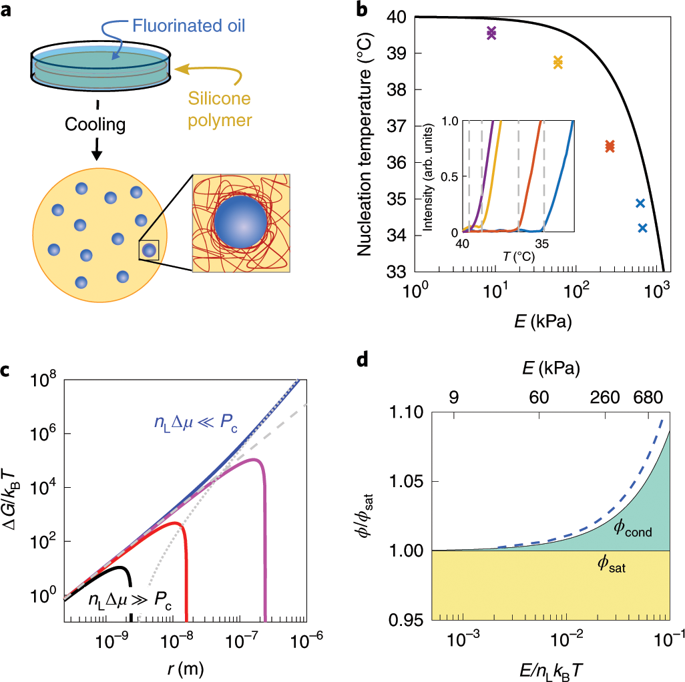Nature Physics ( IF 17.6 ) Pub Date : 2020-01-27 , DOI: 10.1038/s41567-019-0767-2 Kathryn A Rosowski 1 , Tianqi Sai 1 , Estefania Vidal-Henriquez 2 , David Zwicker 2 , Robert W Style 1 , Eric R Dufresne 1

|
Phase separation is a central concept of materials physics1,2,3 and has recently emerged as an important route to compartmentalization within living cells4,5,6. Biological phase separation features activity7, complex compositions8 and elasticity9, which reveal important gaps in our understanding of this universal physical phenomenon. Here, we explore the impact of elasticity on phase separation in synthetic polymer networks. We show that compressive stresses in a polymer network can suppress phase separation of the solvent that swells it, stabilizing mixtures well beyond the liquid–liquid phase-separation boundary. Network stresses also drive a new form of ripening, driven by transport of solute down stiffness gradients. This elastic ripening can be much faster than conventional Ostwald ripening driven by surface tension.
中文翻译:

弹性熟化和液-液相分离抑制
相分离是材料物理学的核心概念1,2,3 ,最近已成为活细胞内分隔的重要途径4,5,6 。生物相分离的特征是活性7 、复杂成分8和弹性9 ,这揭示了我们对这种普遍物理现象的理解中的重要差距。在这里,我们探讨弹性对合成聚合物网络中相分离的影响。我们表明,聚合物网络中的压应力可以抑制使其膨胀的溶剂的相分离,从而使混合物稳定在液-液相分离边界之外。网络应力还推动了一种新的成熟形式,由溶质沿刚度梯度的传输驱动。这种弹性熟化比由表面张力驱动的传统奥斯特瓦尔德熟化快得多。











































 京公网安备 11010802027423号
京公网安备 11010802027423号